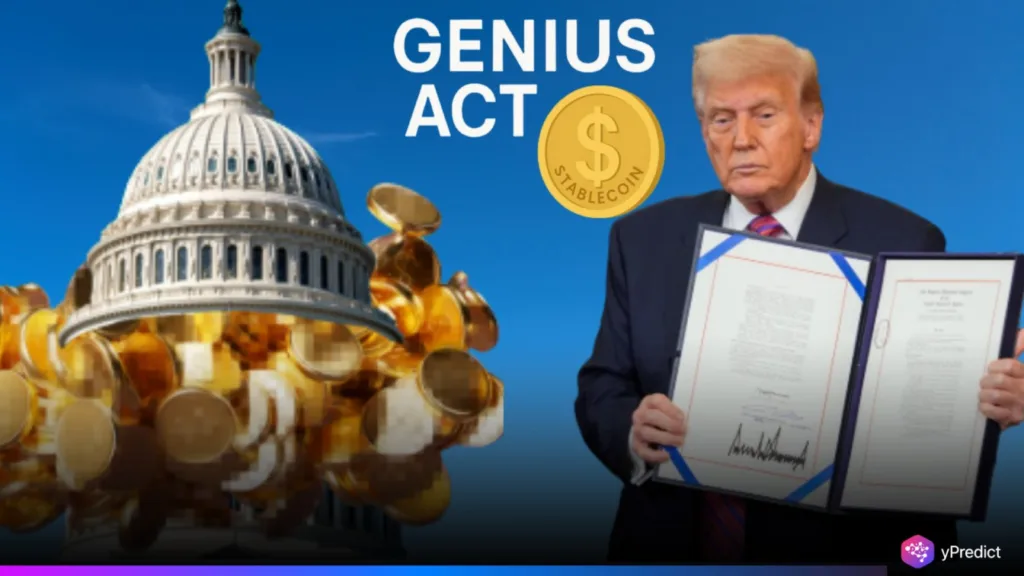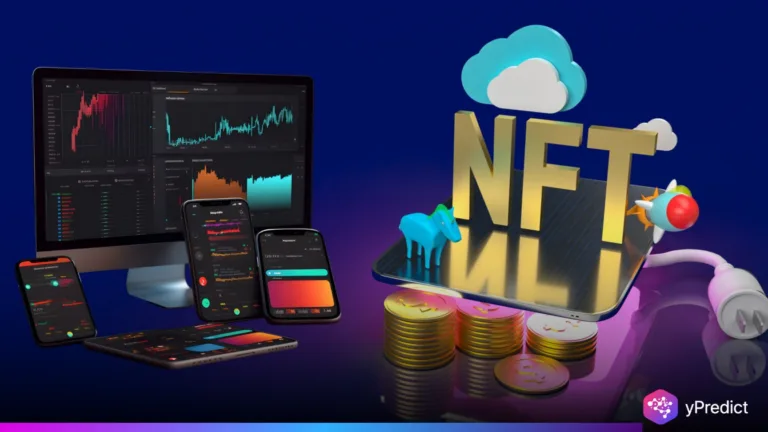
Former U.S. President Donald Trump signed the Genius Act into law on July 17, 2025, setting a historic precedent for stablecoin oversight. The bill, passed with rare bipartisan support for crypto, brings long-awaited regulatory clarity to a volatile digital asset space. This development comes as global stablecoin use rises sharply, with a total market capitalization exceeding $200 billion. According to S&P Global Ratings, this growth has accelerated in both traditional and decentralized finance (DeFi) environments. The Genius Act is framed by lawmakers as a critical measure to address financial shocks caused by prior crypto failures, namely the collapse of TerraUSD in 2021, which revealed vulnerabilities in coins not coming from regulated entities and sparked systemic fears.
AI-Driven Financial Oversight Fuels Push for Stablecoin Reform
The Genius Act is unique in that it utilizes AI-integrated compliance systems, which was a point of emphasis by many lawmakers throughout the discussion. The Genius Act uses automated tools to assist the government in auditing, verifying, and flagging stablecoin issuers in real time. The automated system helps to confirm that the liquid backing of the stablecoin is stable and transparent.
The new regime, as it pertains to stablecoin issuers, will require real-time proof-of-reserves and will obligate stablecoin issuers to disclose this data in real-time, which is integrated into a monitoring system that applies machine learning within treasury and the Federal Reserve. The introduction to this AI-centric compliance is transformative in the relationship between stablecoin issuers and decentralized protocols and traditional financial institutions. U.S. based issuers, particularly those already collaborating with fintech startups, are retooling their internal models to meet this technical compliance layer.
Lessons from TerraUSD Collapse Shape Law’s Core Provisions
Lawmakers pointed to the TerraUSD crash when considering how to draft the Genius Act. In 2021, TerraUSD’s loss of its peg to the dollar resulted in billions of dollars in losses to investors and liquidations across the worldwide markets. A 2021 MIT study cited at the Senate hearings addressed how stablecoin instability, left unchecked, could create risks across modern finance using a similar cascading effect as 2008. The Genius Act addresses these impacts directly, before disasters occur.
All newly created stablecoins under the Genius Act need to liquidity stress test and require a 1:1 asset backing. Additionally, stablecoins created using algorithms with no existing physical cash reserve are prohibited under U.S. jurisdiction. This is a clear repudiation of the headiness that, at least in part, contributed to the failure in implementing TerraUSD.
Bipartisan Crypto Unity Emerges Amid Global Uncertainty
Despite deep divisions in Congress, the bipartisan crypto push behind the Genius Act signals a rare moment of unity. Lawmakers from both parties agreed that stablecoins, once fringe instruments, now function as systemically important financial tools. Several supporters pointed to rising crypto adoption in global conflict zones. A widely cited World Bank report in 2024 noted that economic instability in areas like Gaza and Ukraine fueled demand for dollar-pegged digital assets.
One X thread linked to the bill’s announcement referenced the bombardment of Khan Younis, suggesting stablecoins are becoming survival tools in regions without reliable financial systems. The bipartisan support reflects not just a shared political moment, but a recognition that AI, crypto, and global economics now intersect in high-stakes ways. By passing the Genius Act, Congress reinforced that modern finance needs digital regulation as precise as the technology driving it.
A New Era of Regulated Crypto and Real-Time AI Monitoring
The Genius Act reshapes how the U.S. treats blockchain-based finance. With AI-powered surveillance, liquidity requirements, and bipartisan backing, this law gives stablecoins a credible path forward. It also puts the TerraUSD collapse into historical context—as a warning, not a future risk.
The legislation’s swift passage marks a turning point. It’s not just about controlling crypto; it’s about enabling financial innovation under strict, automated guardrails. As more countries face economic stress, and digital finance becomes the default in crisis zones, the Genius Act might serve as a global model—where AI and policy combine to secure the next phase of monetary evolution.






